How food anchors spring holidays in the earth's "resurrection"
And a recipe: Slow-Cooked Lemon Rosemary Lamb with Butter-Braised Asparagus
Happy spring my friends!
The wetland banks of Fall Creek River sprawl to the edge of our house and offer a front row seat to watch the song-birds return in spring.
But theirs is not the only music to herald the new season. The peepers - small nocturnal frogs - also join the chorus.
One night the wetlands are dead silent. The next, a symphony of whistle-like chirps fills the night. This is when I wrap my girls in a warm blanket, pulling them onto my lap on the wetland-facing deck, to listen with rapture.
The next morning, early, I open my bedroom window while brushing my teeth.
I wait for the moment when the peepers end their lullaby and the chickadees and wrens announce morning with their strong, bright songs. It happens in the span of seconds.
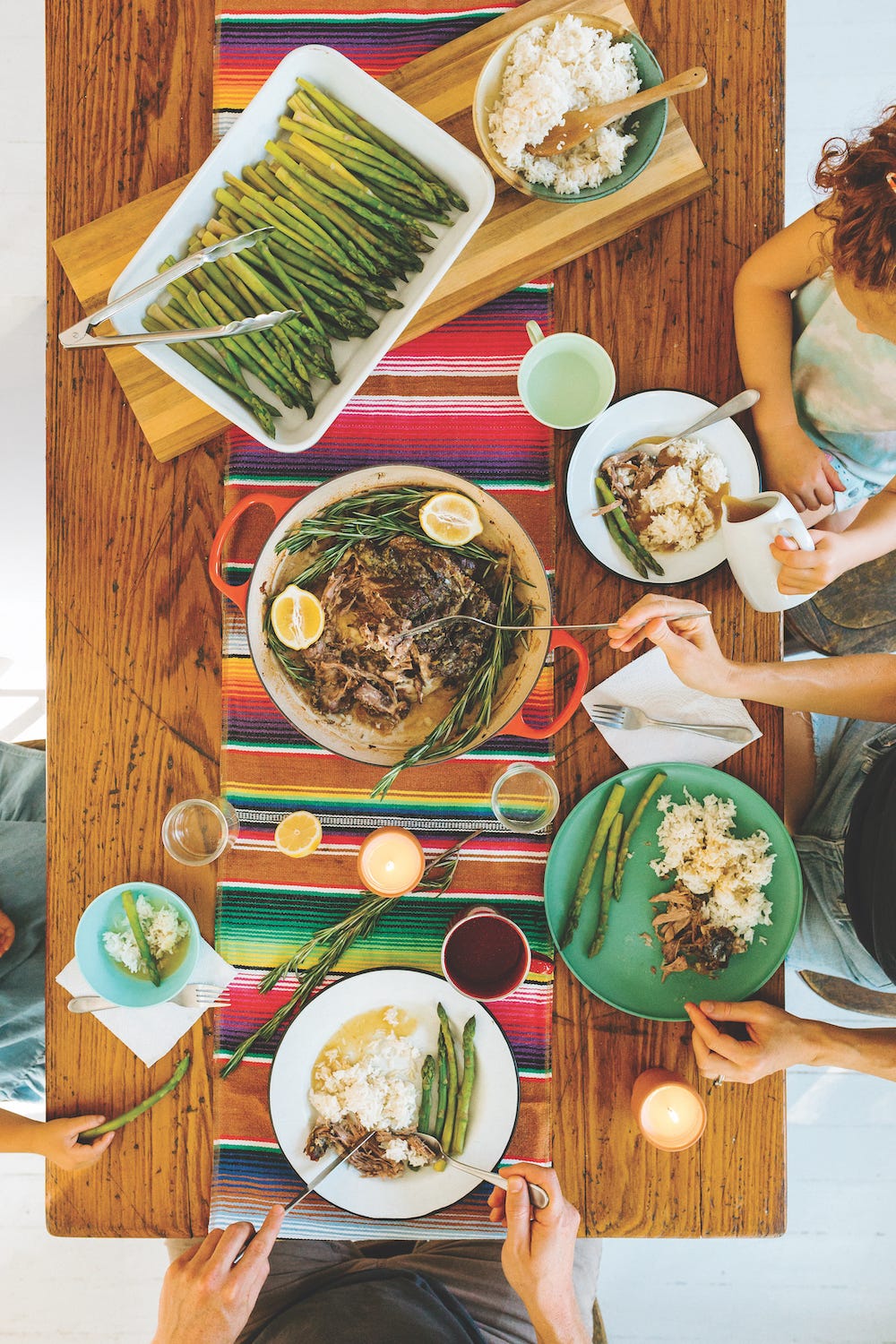
The spring peepers mark a time to rejoice! The grey mantel of clouds, typical of Finger Lakes winters, has finally lifted, and spring crocuses spray the earth with color.
But historically, the effects of Vitamin D deficiency, isolation, and even silence, was layered with graver hardships, such as meticulous food rationing and keeping the home heated.
For this reason, spring celebrations were essential to the well-being of families and communities. They marked our resurrection from the dark cave of winter, satisfying a primal urge to reunite, celebrate the sun’s return and the plants’ rebirth, and to pray - hard - for a fertile season to carry them through next winter.

These festivals and holidays - from Celtic Ostara to Hindu Holi Festival, Christian / Catholic Easter, and Jewish Passover - featured ingredients symbolic of new life, many of which are still incorporated in modern celebrations.
Best-known is the egg.
A Chinese creation myth describes how a deity named Pangu grew inside a cosmic egg and when it cracked, the universe as we know it was born (this inspired the name for the Cosmic Egg Mobile in Seasonal Family Almanac; here’s a step-by-step preview on Instagram).
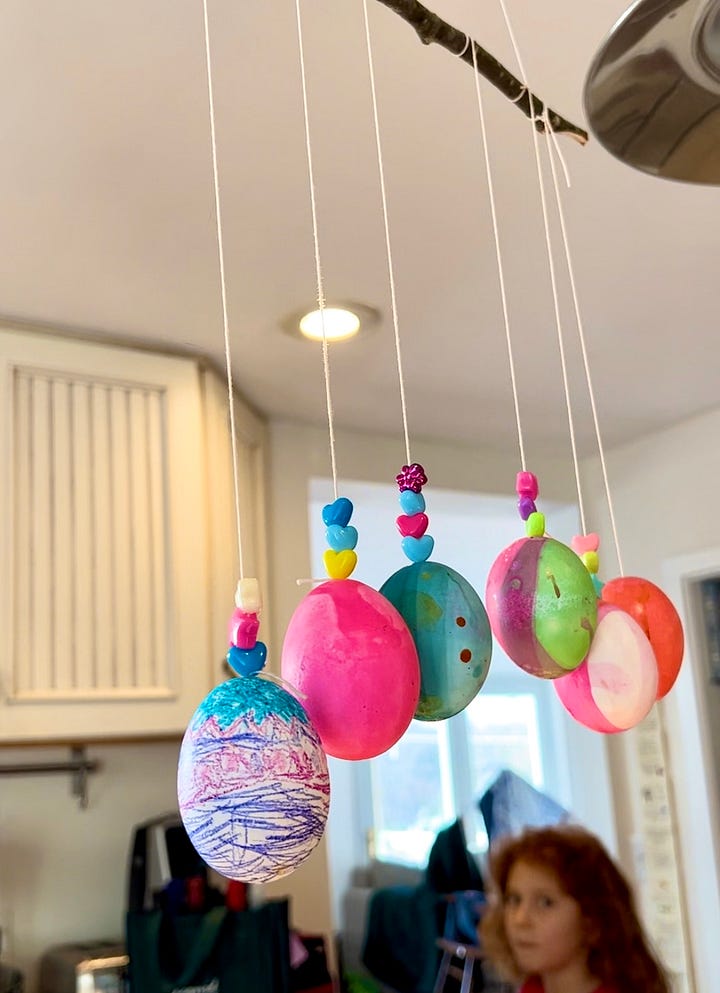

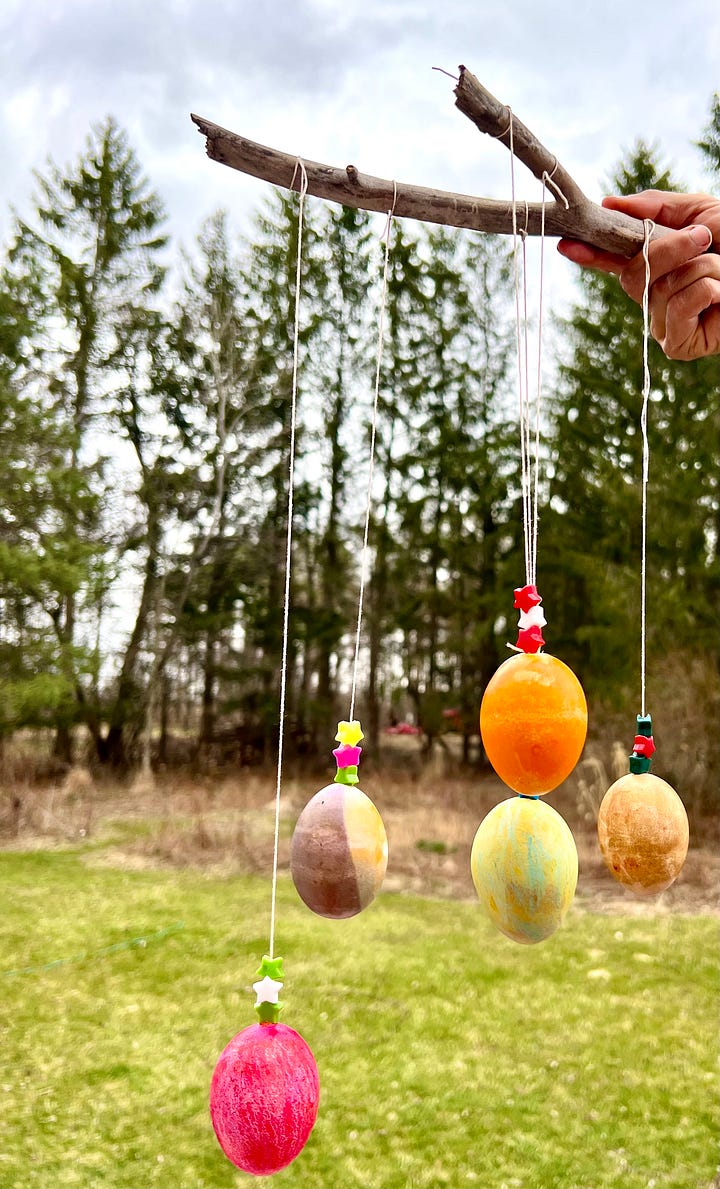
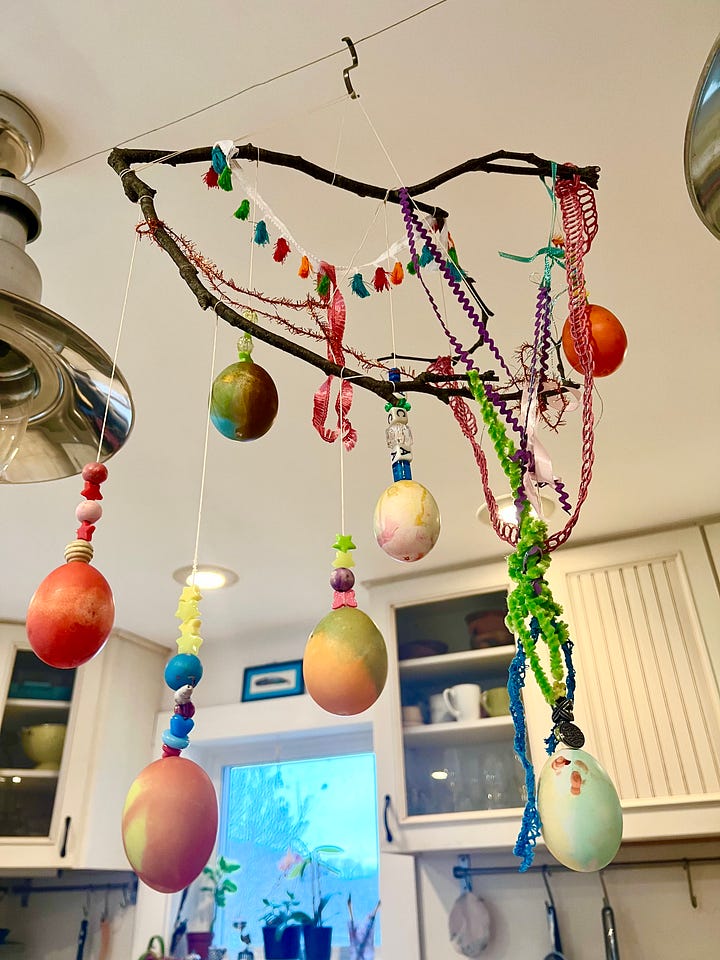

For Passover, a hard-boiled egg is eaten as part of the Seder feast to symbolize new life in spring, along with parsley, for spring greens.
In the Serbian Orthodox Easter tradition, onion skins are used to dye eggs a deep crimson, symbolizing the blood of Jesus and the fertility of the menstrual cycle. The eggs are then baked into a Spring Celebration Bread (recipe in Seasonal Family Almanac). There is a tradition in Eastern Europe of planting Easter eggs amongst crops to promote soil fertility.
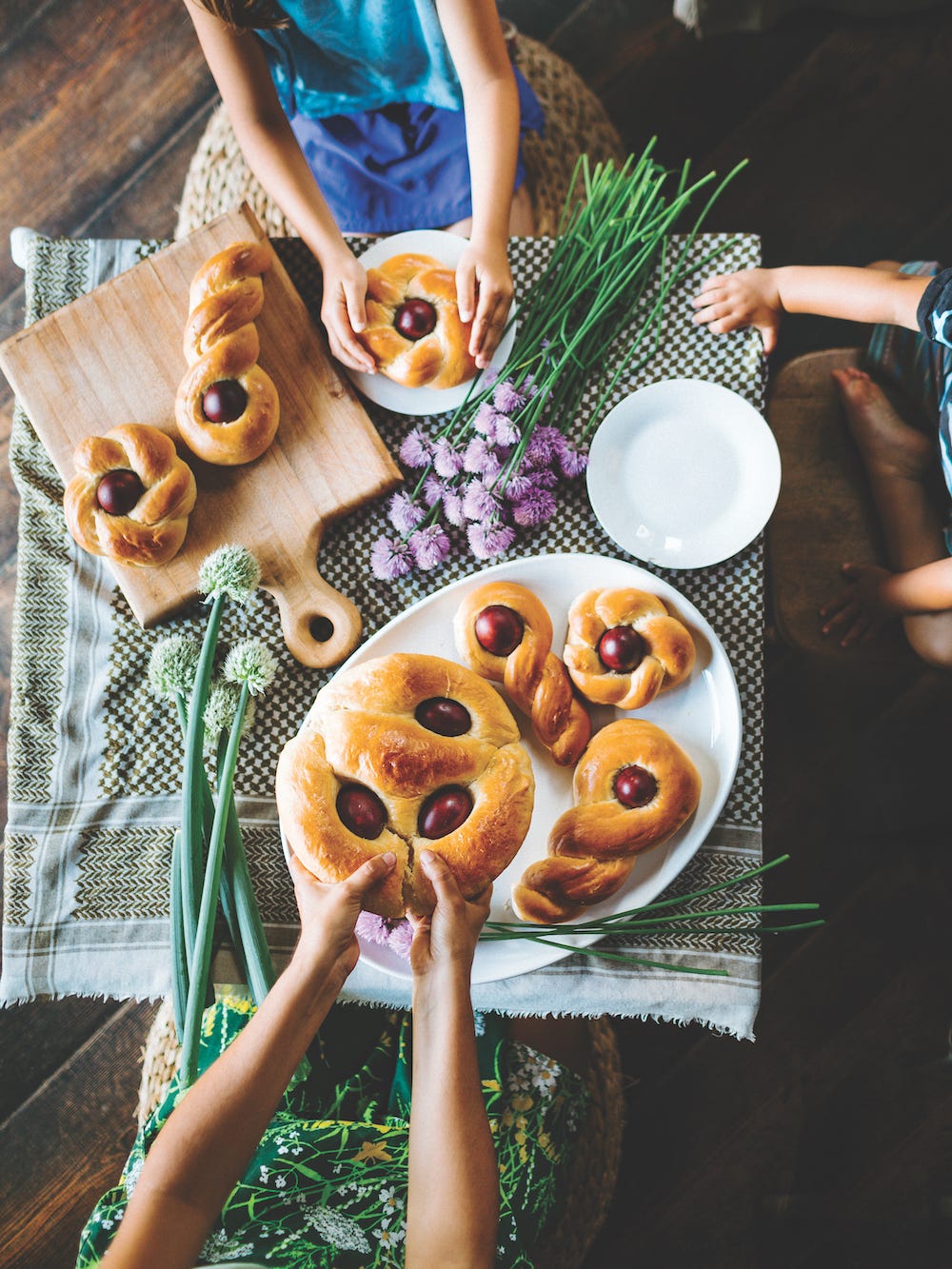
But spring tradition doesn’t stop at eggs. Spring chickens and lambs were - and still are - the centerpiece at feasts, as are spring vegetables like asparagus. (Check out Jana’s early Easter feast featuring recipes from our book!)
Serving lamb at spring celebrations like Easter and Passover stems from an old, practical tradition. Born in February and early March, lambs graze and grow plump on spring’s nutrient-dense grasses, making their meat rich and tender.
(My friend and homesteader explained that when male lambs grow, they assault female lambs and small children, if around. A natural way to curb unwanted aggression and honor their lives is to humanely raise and eat them.)
So, when my kids shout, “I can’t wait to celebrate Easter!” I remind them, we celebrate Spring. Jesus’ resurrection (Easter) and the Jew’s freedom from slavery and rebirth as a sovereign people (Passover) are just two examples of how spring holidays mirror the earth’s awakening.
The egg hunt is to remind us of new life, to REVEL in it (with candy, because come on moms, kids wanna have fun), and to bring our noses down to the daffodils.
I’d LOVE to hear how you celebrate spring with your family and friends in the comments below!
I’ll leave you with one of my favorite, spring celebration recipes - Slow-Cooked Lemon Rosemary Lamb with Butter-Braised Asparagus (recipe below) - an easily prepared, largely-hands-off masterpiece that will wow your guests!
With ears full of the peepers’ song,
Emma
P.S. My new book, Seasonal Family Almanac goes on sale April 18th. Pre-orders are a huge help to determining the book’s success. If you haven’t gotten your copy yet, you can pre-order it here and enter this amazing giveaway.
Slow-Cooked Lemon Rosemary Lamb with Butter-Braised Asparagus
Notes: Substitute a leg of lamb with three or four lamb shanks. This largely hands-off recipe results in a rich, bright dish that pairs beautifully with spring’s jewel, asparagus! Garnish with a rosemary sprig and serve over rice to soak up the zesty gravy.
Yield: 6 to 8 servings
Lamb
One 3-lb bone-in or boneless leg of lamb
8 garlic cloves, grated
Zest of 5 lemons
2 sprigs fresh rosemary, minced, or 1 Tbsp dried, crumbled
1 Tbsp extra-virgin olive oil
2 tsp kosher salt
2 small onions, peeled and quartered
2 Tbsp cornstarch (or arrowroot powder or tapioca starch)
Asparagus
3 Tbsp unsalted butter
1 lb asparagus, ends trimmed 1⁄4 cup stock or water
Kosher salt
To make the lamb, preheat the oven to 450°F. Rinse and dry the lamb. Put it on a cutting board and use a sharp knife to cut crosshatches on all sides, cutting 1⁄2 inch deep.
In a small bowl, combine the garlic, lemon zest, rosemary, olive oil, and salt and mash into a paste with the back of a spoon. Using your fingers, work the garlic mixture into the meat, rubbing it over the entire surface and into the crosshatches.
Put the onions in the bottom of an ovenproof pan with a lid or a Dutch oven and place the seasoned meat on top. Add 1 cup of water to the pan, and bake, uncovered, for 20 minutes. After 20 minutes, cover the pan and lower the oven temperature to 250°F. Set a timer for 3 hours. The meat should be fork-tender. If not, cook for another 30 minutes and check again.
Transfer the meat to a cutting board, tent with foil, and let rest for 10 minutes. Do not clean the pan.
While the lamb is resting, use the pan juices to make a gravy: Put the pan over medium heat. Skim any excess fat off the pan juices. Mix the cornstarch with 1⁄4 cup of cold water until smooth, then pour into the pan and stir over medium heat until the gravy thickens. Keep warm in a jug or gravy boat.
To make the asparagus, in a large skillet, melt 1 Tbsp of the butter over medium heat. Add the asparagus in a single layer. Cook until lightly browned, about 2 minutes. Use tongs to turn the aspara- gus and cook for 2 minutes more. Add the remaining 2 Tbsp of butter and the stock or water, cover, and cook on low for no more than
5 minutes—the asparagus should still be bright green, so be careful not to overcook it.Transfer to a serving dish and season with salt.
To serve, use a fork to pull the lamb off the bone; it will come away easily and fall off in shreds. Serve the lamb over rice with a side of asparagus and add gravy over top as desired.





